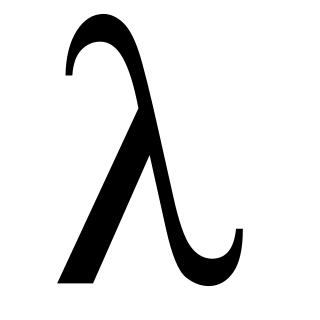This article relies too much on references to primary sources .(April 2010) (Learn how and when to remove this template message) |
Computational Transportation Science (CTS) is an emerging discipline that combines computer science and engineering with the modeling, planning, and economic aspects of transport. The discipline studies how to improve the safety, mobility, and sustainability of the transport system by taking advantage of information technologies and ubiquitous computing. A list of subjects encompassed by CTS can be found at include. [1]

Computer science is the study of processes that interact with data and that can be represented as data in the form of programs. It enables the use of algorithms to manipulate, store, and communicate digital information. A computer scientist studies the theory of computation and the practice of designing software systems.

Transport or transportation is the movement of humans, animals and goods from one location to another. In other words the action of transport is defined as a particular movement of an organism or thing from a point A to the Point B. Modes of transport include air, land, water, cable, pipeline and space. The field can be divided into infrastructure, vehicles and operations. Transport is important because it enables trade between people, which is essential for the development of civilizations.
Ubiquitous computing is a concept in software engineering and computer science where computing is made to appear anytime and everywhere. In contrast to desktop computing, ubiquitous computing can occur using any device, in any location, and in any format. A user interacts with the computer, which can exist in many different forms, including laptop computers, tablets and terminals in everyday objects such as a refrigerator or a pair of glasses. The underlying technologies to support ubiquitous computing include Internet, advanced middleware, operating system, mobile code, sensors, microprocessors, new I/O and user interfaces, networks, mobile protocols, location and positioning, and new materials.
Computational Transportation Science is an emerging discipline going beyond vehicular technology, addressing pedestrian systems on hand-held devices but also issues such as transport data mining (or movement analysis), as well as data management aspects. CTS allows for an increasing flexibility of the system as local and autonomous negotiations between transport peers, partners and supporting infrastructure are allowed. Thus, CTS provides means to study localized computing, self-organization, cooperation and simulation of transport systems.

Data mining is the process of discovering patterns in large data sets involving methods at the intersection of machine learning, statistics, and database systems. Data mining is an interdisciplinary subfield of computer science and statistics with an overall goal to extract information from a data set and transform the information into a comprehensible structure for further use. Data mining is the analysis step of the "knowledge discovery in databases" process, or KDD. Aside from the raw analysis step, it also involves database and data management aspects, data pre-processing, model and inference considerations, interestingness metrics, complexity considerations, post-processing of discovered structures, visualization, and online updating. The difference between data analysis and data mining is that data analysis is to summarize the history such as analyzing the effectiveness of a marketing campaign, in contrast, data mining focuses on using specific machine learning and statistical models to predict the future and discover the patterns among data.
Several academic conferences on CTS have been held up to date:
- The Fourth ACM SIGSPATIAL International Workshop on Computational Transportation Science [2]
- The Third ACM SIGSPATIAL International Workshop on Computational Transportation Science [3]
- Dagstuhl Seminar 10121 on Computational Transportation Science [1]
- The Second International Workshop on Computational Transportation Science [4]
- The First International Workshop on Computational Transportation Science [5]
There is also an IGERT PHD program on Computational Transportation Science at the University of Illinois at Chicago. [6]







